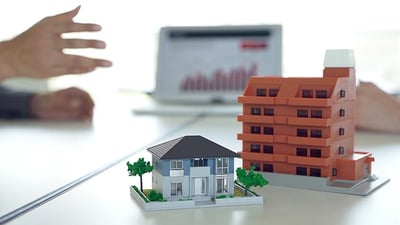Page 50 491 - 500 of 537
Forbes Finance Council: Improving Returns Through Tax-Efficient Investing

Our Chief Revenue Officer, Rob Johnson, just published a piece on his Forbes Finance Council column, entitled "Improving Returns Through Tax-Efficient Investing."
Due Diligence: Avoiding Buyer's Remorse

Before buying real estate of any kind, it stands to reason that research on the asset should take place. Doing so helps ensure the minimization of post-sale shocks or surprises. This research -- known as due diligence -- provides you with an in-depth look at your potential investment.
How Does Location Impact My Real Estate Investment?

Location, location, location. We’ve all heard it before and certainly the location of an investment property is a huge driver of the investment’s performance. While it may be easy to spot a “good” location, there are also some locational risks that are often overlooked. From the market the property sits in, to its location within a retail center, location is fundamental to determining why tenants, occupants, and customers are driven to a particular commercial or residential property. As you review and compare different real estate investment opportunities, here are some important factors to consider.
The Tax Implications Of Exchanging, Selling, Or Inheriting Investment Property

Owning investment property means much more than maximizing cash flow through rent growth and occupancy. Owning investment property means managing the taxes that come with it, whether that be in the form of taxable income or capital gains. In this article, we’ll discuss three key differences between exchanging, selling, or inheriting investment property, and the tax implications that come with each scenario.
What Are The Problems With Real Estate Investment Trusts?

Investors have a deep emotional attachment to their investments; abdicating control is not something that comes easily. Real Estate Investment Trusts (REITs) are alluring to investors due to the high dividends, which can boost the value of their portfolio. However, there are a few factors that should be considered prior to loading up on REITs. Read them below.
What You Should Know About Real Estate Crowdfunding

Real estate crowdfunding has made real estate investing available to a broader range of potential investors. But this ease of access also means it is easy to make a bad investment. Before you begin turning over your hard-earned money to a real estate crowdfunding platform, here are a few things you should know about investing in real estate crowdfunding deals.
How To Get Started Investing In Real Estate

Real estate is considered an attractive asset class for those seeking steady cash flows and the opportunity to realize profits via asset appreciation over time. What’s more, investors often enjoy being able to see, touch, and feel their investment property, whether it be a duplex in San Francisco or a retail plaza in Charlotte. Its tangible nature and positive opportunities only heighten its appeal to the masses.
What Is Depreciation, And Why Is It Important?

Real estate investment is widely considered as an attractive asset class to investors around the United States for a number of reasons. Whether you own an office building in the central business district of Chicago, an apartment building in Charlotte, or a retail strip center in Orlando, real estate can offer attractive risk-adjusted returns. Given conscientious market selection and fluid operation, real estate has the potential to appreciate over time — allowing you to build equity as you reduce debt on the property or portfolio.
What Is FIRPTA?

When an individual sells property in the United States, they must pay taxes on that earned income. This tax applies to foreign investors who sell property in the U.S. as well. In fear that foreign investors won’t file tax returns, the IRS requires that a withholding tax be held — which can be thought of as an ‘advance tax payment.’ This requirement is enacted through FIRPTA, which stands for the Foreign Investment in Real Property Tax Act.
What Should I Know About Investing In Real Estate?

Investing in real estate is no easy feat. Despite the many glamorized television shows touting the seemingly “simple” process of buying and selling real estate properties for a quick buck, there is far more that happens when it comes to investing in real estate than these shows portray. For one thing, investing in real estate takes a tremendous amount of research and due diligence, especially for investors who are considering buying a property that they are not entirely familiar with.
Page 50 491 - 500 of 537


